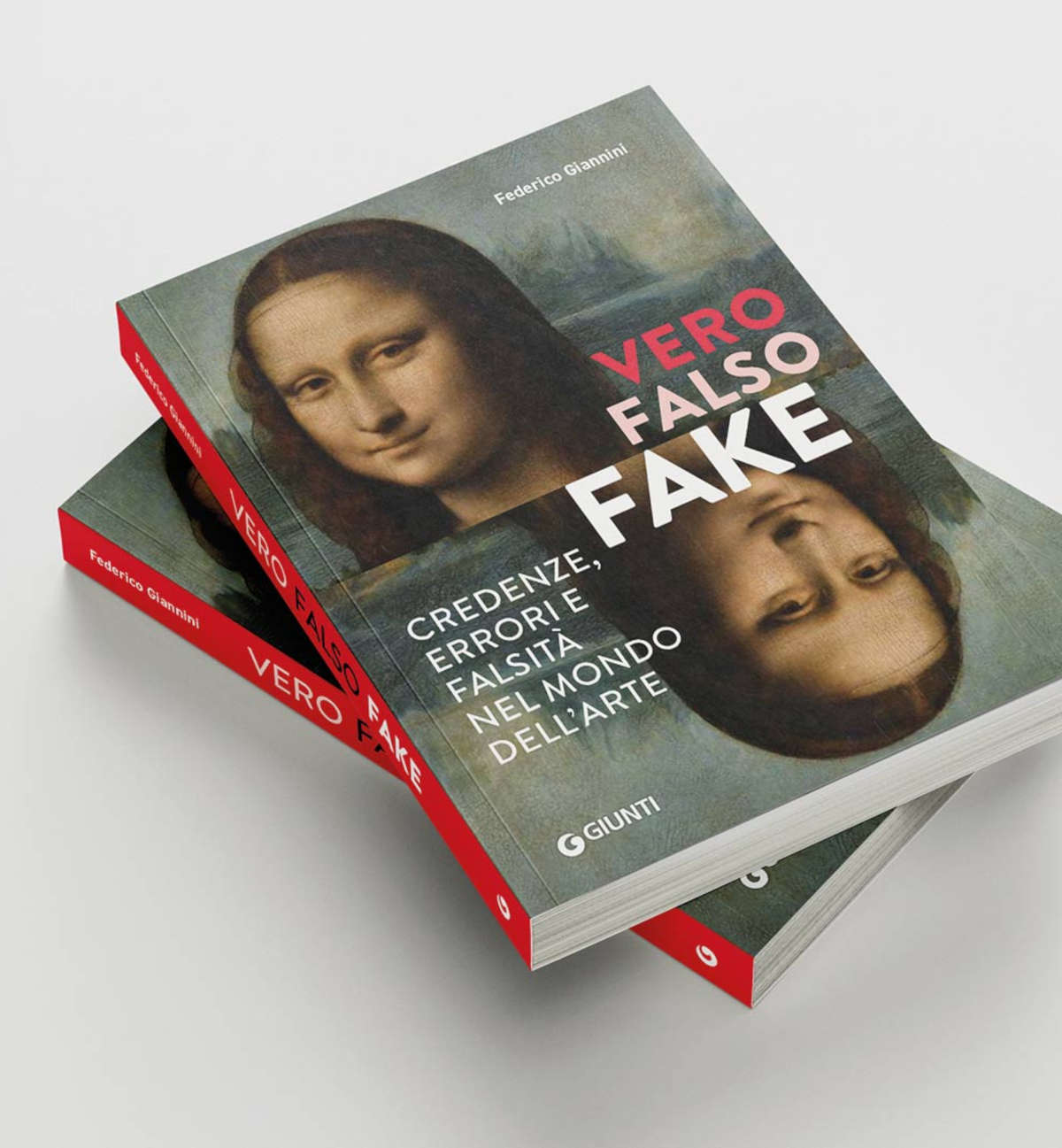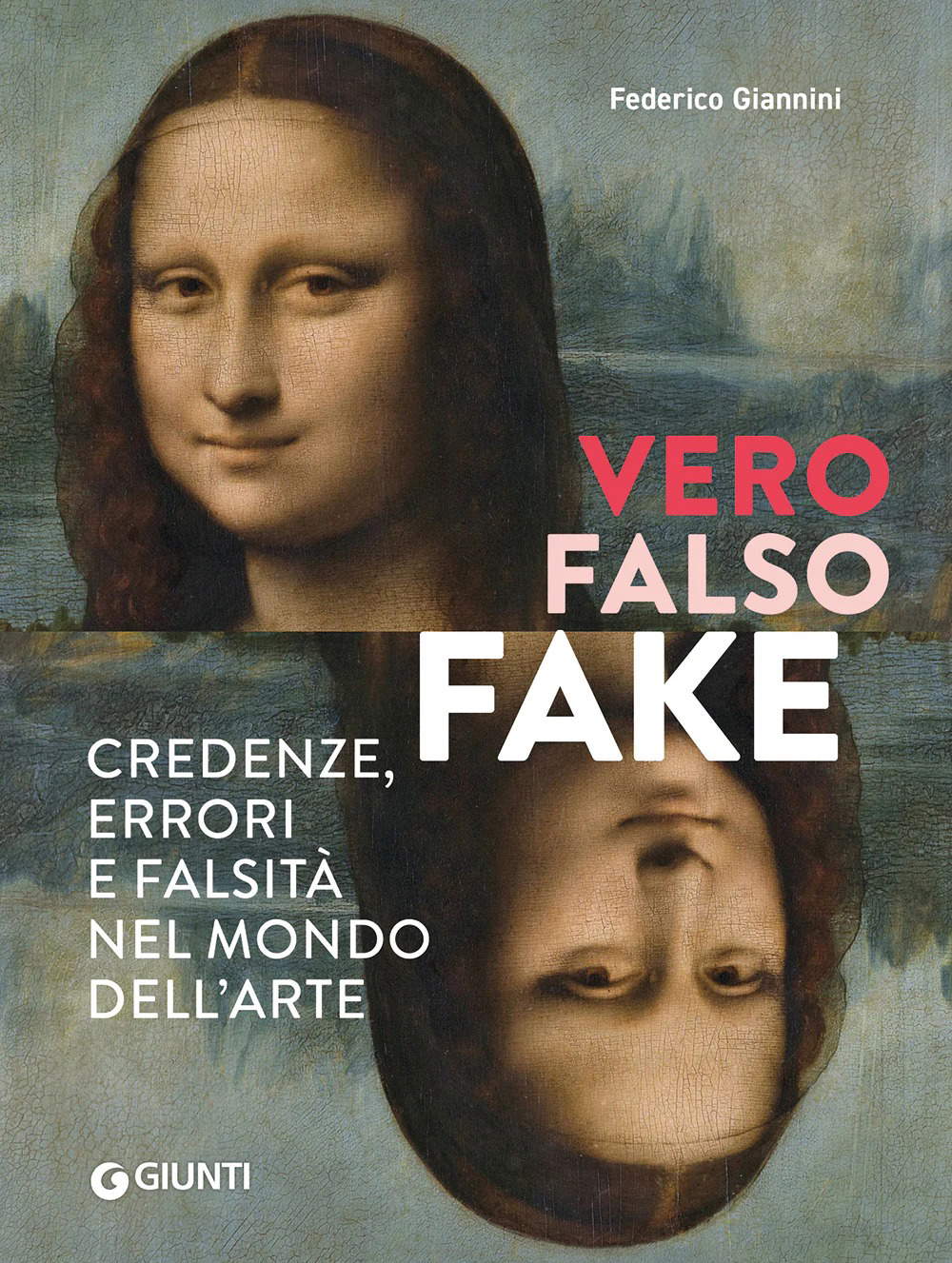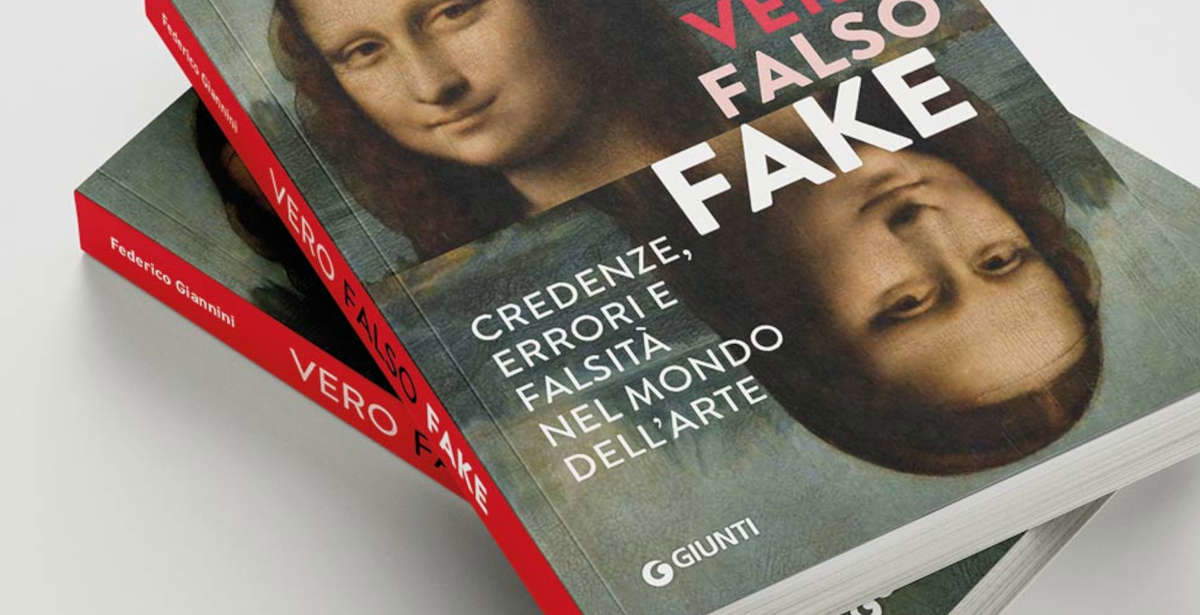True, False, Fake. Beliefs, Errors and Falsehoods in the Art World(Giunti Editore), the essay by Federico Giannini (Massa, 1986) journalist, art critic, founder and editor-in-chief of the magazine Finestre sull’Arte. It can already be found in bookstores throughout Italy and in major online stores . A 224-page, illustrated book, it is destined to make people discuss, entertain, but above all reflect: how many of the things we take for certain about art-from attributions to anecdotes, from statistics to history-are they really founded? The answer, page after page, seems to be: less than we think.
With his usual elegant and accessible style, Giannini takes the reader on a journey through distorted historical truths, hoaxes that have become legends, and forgeries that have fooled institutions, insiders, and public opinion. The result is a hybrid work that combines cultural storytelling and journalism, capable of speaking as much to the art enthusiast as to the curious reader who questions the value of truth today.
In the book we move from overt forgeries, such as the infamous “Michelangelo of Marcialla”-a work attributed without foundation to Buonarroti-to die-hard beliefs, such as theidea that 60 percent of the world’s artistic heritage is to be found in Italy (a a statistic that finds no documented verification, but which continues to circulate in conferences, interviews, advertisements and official speeches), from the forgeries of Annio da Viterbo to artificial intelligence. Giannini sheds light on how many of these hoaxes, which take root in the age of post-truth, are the result of identity narratives, media distortions or simple errors repeated until they become part of common sense.

While it is true that fakes have always accompanied art history, it is also true that in the 21st century the phenomenon has taken on new forms. Giannini also analyzes the contemporary mechanisms of art misinformation, from the role of social networks to sensationalist narratives artfully mounted to attract media attention.
There is no shortage of references to miraculous “finds” that later turned out to be completely insubstantial, but circulated as a result of enthusiastic media support even before experts could pronounce. The book reminds us that what is said about art does not always serve to better understand it. Sometimes, it serves only to construct a catchy, sellable, politically expendable or ideologically convenient narrative.

In addition to the roundup of examples, anecdotes and case studies, True, False, Fake emphasizes the need to cultivate critical spirit, not only in art, but in the way we interpret reality. Giannini does not pose as a debunker of myths for the sake of controversy, but as an observer who invites us to distinguish between what we know and what we think we know. A seemingly simple question, but one capable of profoundly changing the way we look at museums, books, monuments, and even the art education we receive.
"True, False, Fake,“ Giannini explains, ”is not so much a collection of hoaxes and so-called fakes: it is, of course, that too, but I intended it primarily as a pretext to try to understand, through art, the mechanisms by which hoaxes are born, take root and spread, and often become myths. It is on these dynamics that I have tried to light a slight glow, on the shadows of the false that mixes with the true." In fact, the content is prefaced by an extensive introduction on what hoaxes are, what is meant by "information disorder,“ what the difference is between disinformation and misinformation, and the book also has helpful tips on how to defend oneself in the epilogue. In fact, Giannini’s idea is to approach the reader to the world of so-called ”fake news" through the lens of art, identifying behaviors, characters, patterns, and recurring origins, giving examples taken from the art world. A way, then, to talk about hoaxes from the point of view of someone who does the job of an art journalist. A book that reminds us that not everything we believe about art (and the world in general) is really as it is presented.
 |
| Between hoaxes and myths in art: out comes "True Fake," Federico Giannini's book |
Warning: the translation into English of the original Italian article was created using automatic tools. We undertake to review all articles, but we do not guarantee the total absence of inaccuracies in the translation due to the program. You can find the original by clicking on the ITA button. If you find any mistake,please contact us.